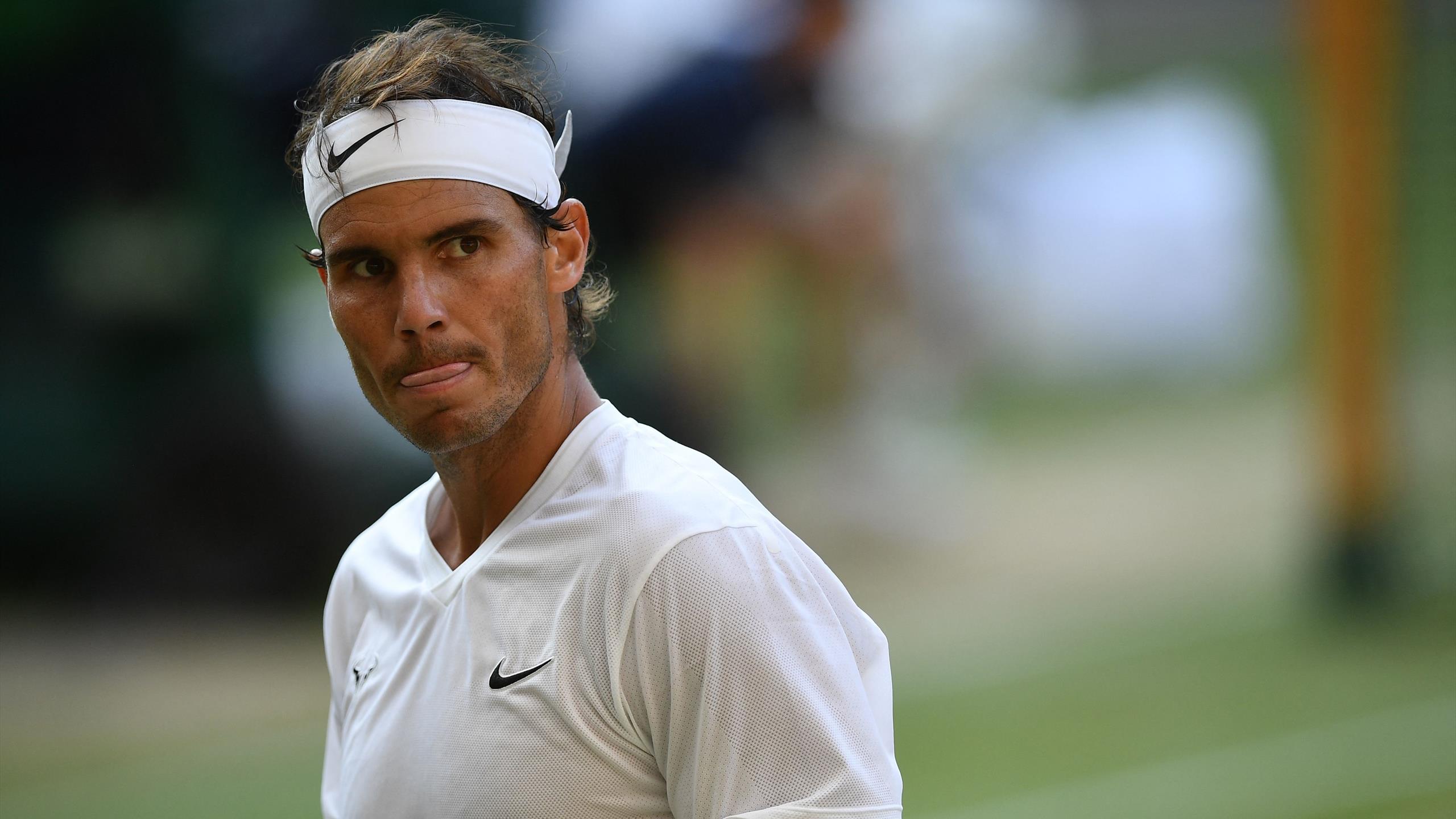Rafael Nadal has enjoyed another strong run at Wimbledon despite concerns over his foot, but there are signs the 22-time Grand Slam Champion is not quite himself. The two-time Wimbledon champion has dropped only two sets on his way to the quarterfinals– not unusual for Nadal on grass. But is Rafa in a sound place mentally for the closing arguments of Wimbledon 2022? Here’s a look at where things stand.
Mid-Match Conference With Sonego
In an unusual but not unprecedented twist, an off-tempered Nadal called his third-round opponent Lorenzo Sonego to the net for a chat to discuss the Italian’s extended grunting. Rafa had just been broken. The move was off-putting for Sonego, and uncharacteristically unsportsmanlike by Nadal. To his credit, Rafa apologized and admitted it was bad form.
But even recently, Nadal has called his opponent to the net during match. When he played Carlos Alcaraz earlier this year in Madrid, a fan suffering a medical emergency temporarily halted play. After several minutes, an impatient Nadal motioned a wide-eyed Alcaraz to meet him at the net. There, Rafa told Alcaraz he was fine with continuing play if Carlitos was. But the chair umpire intervened, putting a stop to that idea, while the fan was helped out of the stadium. As it turned out, Nadal lost the match, and it was later revealed he was bothered by foot pain.
As for the Wimbledon incident, Sonego said Nadal’s actions were a distraction for him. The usually businesslike Rafa was clearly out of line. While it’s well known that Nadal likes his routines on the court, his desire to control his atmosphere has bubbled up during this Wimbledon. In his victory over Botic van de Zandschulp, for example, Nadal at one point insisted that all six balls be accounted for. It’s a reasonable request, but one that most players would not likely stop play to ensure.
Nadal’s Pace of Play
While his match durations are similar to his past years at Wimbledon– in the three-hour range for four set matches and in the two-hour range for three-set matches– anecdotally Nadal is regularly leaving 15 to 20 seconds on the serve clock. This is unusual. Rafa normally uses most of the serve clock. In addition, Nadal has not been assessed a time violation warning or penalty through four rounds at Wimbledon 2022.
Nadal’s Return Position
A final slightly uncharacteristic move for Nadal has been to adjust his return position on some games. Rafa has famously said that standing too close to the baseline does not work for him at Wimbledon, and he’s better off adopting a deeper stance like he does on clay. However, in this Wimbledon 2022, Nadal has experimented with again standing in on second serves in some situations. The adjustments could be seen prominently in matches with Ricardas Berankis and van de Zandschulp. Not one to mess with his routines or something that feels comfortable, this could represent a desire to intervene in his opponents’ service games more quickly. Again, patience could be a factor.
The question is how have these elements affected his state of mind. The symbolic return of Roger Federer to Wimbledon– in a suit– for Centre Court celebrations could be a front-and-center reminder to Nadal that his career is winding down. He knows winning now is a priority, because it soon could be all over. In addition, he’s announced he’s about to be a father for the first time. Life is coming at him fast. Finally, the ever-elusive calendar Grand Slam is in play for Rafa. As Novak Djokovic said last year, the pursuit of this goal is loaded with pressure.
What Hasn’t Changed for Nadal
If Nadal fans are looking for a few signs that all is well in Vamos Rafa Nation, look no further than the stat sheet. If there’s one thing he’s known for, it’s the category of percentage of second serve points won. This is the metric in men’s tennis that separates the pedestrians on tour from the elites because it’s where the match within the match is played. Nadal dominates this stat category. In his last two matches, Nadal has been well above 70% on second serve points won, when anything above 50% is good and anything above 60% is the gold standard.
But it doesn’t get any easier for Rafa. If his foot is healthy, Nadal faces Taylor Fritz, who he lost to in the final of Indian Wells this year, potentially Nick Kyrgios, who beat him at Wimbledon in 2014, and of course, 20-time Grand Slam Champion Novak Djokovic looms as a possibility in the final. Suddenly, his draw is back to being tough, and it’s a heavy lift for Nadal from here.















